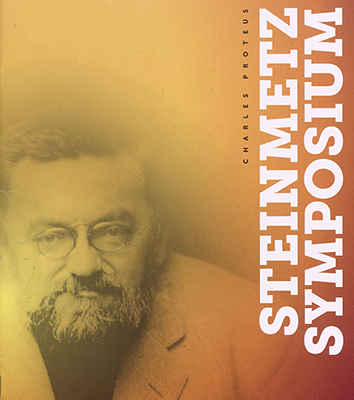Document Type
Open Access
Location
ISEC 124
Faculty Sponsor
Ashok Ramasubramanian
Department
Mechanical Engineering
Start Date
13-5-2022 11:50 AM
Description
The forces driving flexure and torsion in early embryo development are unknown but are vital for proper organ development. Embryonic flexures cause the body to bend and torsion is the rotational component. Improper flexion and torsion could lead to birth defects. This project aims to use differential growth on a 3D computational model to show how a chick embryo bends and twists during early development. We were able to show that differential growth can produce flexion and torsion as observed in the experiment. ABAQUS was used as the FE solver. As a first approximation, a solid cylinder was selected as the initial geometry. The part was partitioned into cranial, cervical, thoracic and caudal regions. For the coordinate system to follow along with the model deformation, local material orientation and nonlinear geometry were used. A fixed boundary condition was created to constrain the displacement and rotation on the bottom surface. A quadratic tetrahedral mesh was used. Previously published material properties were used. We also used the chick embryo as the experimental model, staged with the system of Hamburger and Hamilton (HH). The computational model displayed flexures along the dorsal edge. To determine the internal growth loads, we compared our 3D model with a chick embryo. Our results show that geometry similar to the experiment could be achieved by assigning differential growth on specific sections. Half of the thoracic region was assigned 30% growth and to achieve both flexure and torsion simultaneously, the upper dorsolateral region was assigned 70% growth. We observed torsion by element tracking; only the yellow marked element was visible in the rotated model, similar to the experiment. Our results show that it is possible to obtain flexion and torsion similar to that seen in the experiment using differential growth. Using chemical perturbations, other research in our lab investigates if the differential growth patterns suggested by the model do indeed occur in the developing embryo.
Investigating Embryonic Flexure and Torsion using Finite Element Analysis (FEA)
ISEC 124
The forces driving flexure and torsion in early embryo development are unknown but are vital for proper organ development. Embryonic flexures cause the body to bend and torsion is the rotational component. Improper flexion and torsion could lead to birth defects. This project aims to use differential growth on a 3D computational model to show how a chick embryo bends and twists during early development. We were able to show that differential growth can produce flexion and torsion as observed in the experiment. ABAQUS was used as the FE solver. As a first approximation, a solid cylinder was selected as the initial geometry. The part was partitioned into cranial, cervical, thoracic and caudal regions. For the coordinate system to follow along with the model deformation, local material orientation and nonlinear geometry were used. A fixed boundary condition was created to constrain the displacement and rotation on the bottom surface. A quadratic tetrahedral mesh was used. Previously published material properties were used. We also used the chick embryo as the experimental model, staged with the system of Hamburger and Hamilton (HH). The computational model displayed flexures along the dorsal edge. To determine the internal growth loads, we compared our 3D model with a chick embryo. Our results show that geometry similar to the experiment could be achieved by assigning differential growth on specific sections. Half of the thoracic region was assigned 30% growth and to achieve both flexure and torsion simultaneously, the upper dorsolateral region was assigned 70% growth. We observed torsion by element tracking; only the yellow marked element was visible in the rotated model, similar to the experiment. Our results show that it is possible to obtain flexion and torsion similar to that seen in the experiment using differential growth. Using chemical perturbations, other research in our lab investigates if the differential growth patterns suggested by the model do indeed occur in the developing embryo.


